This is not a party. This is not a festival. This is about more than a pipeline. In one sense, this is something we’ve never quite seen before, and at the same time it’s been happening for hundreds of years. This is Standing Rock.
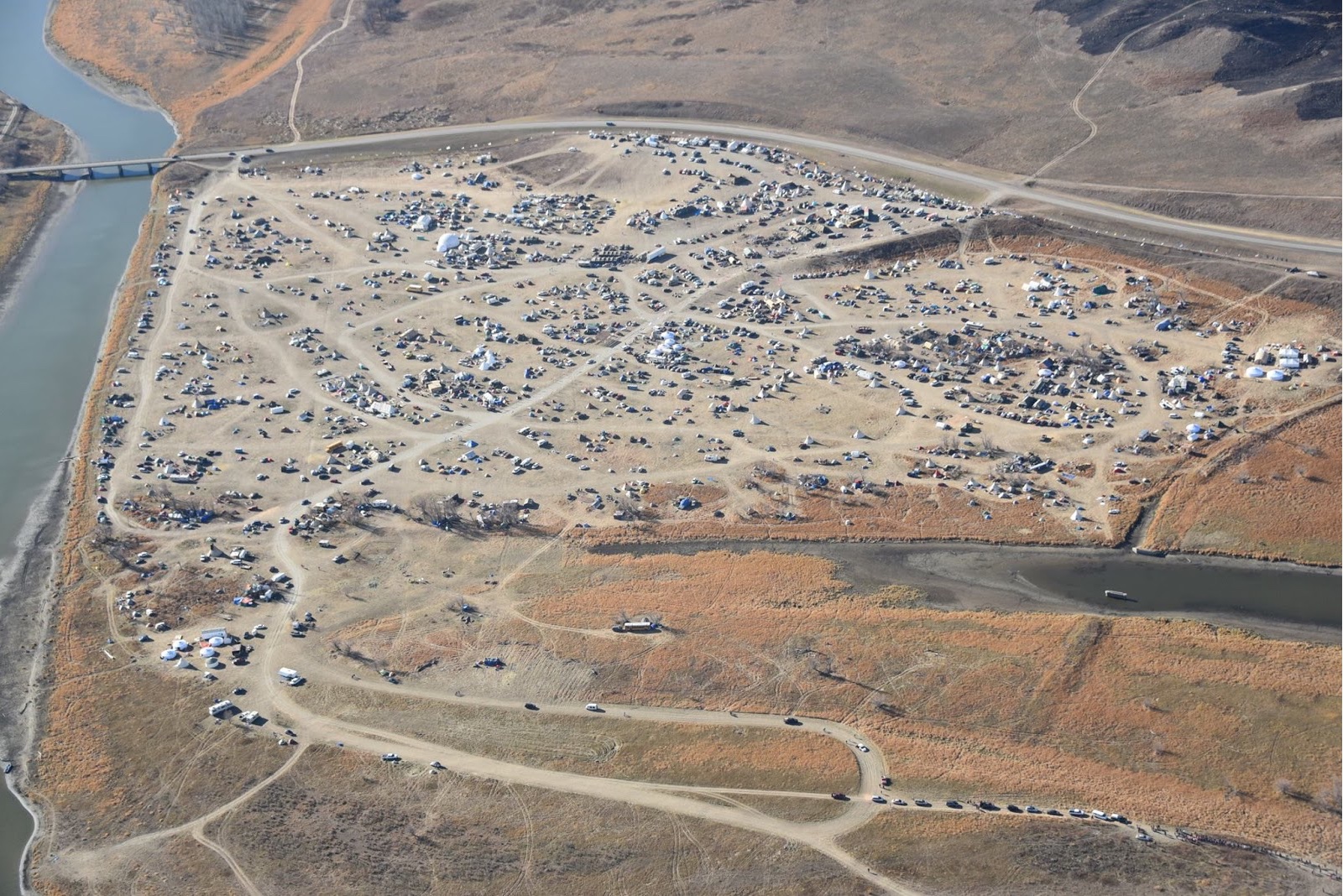
On April 1, 2016, tribal citizens of the Standing Rock Lakota Nation and ally Lakota, Nakota, and Dakota citizens founded a prayer camp along the proposed route of the Dakota Access Pipeline. Concerned about their land and water, these citizens intended to peacefully stop the pipeline, which has been dubbed “the black snake.”
When the camp started, three flags flew representing the three nations that came together in that initial moment. Now there are over 300 flags representing the different tribal nations that have gathered in support of Standing Rock, some as far as Tibet and New Zealand.
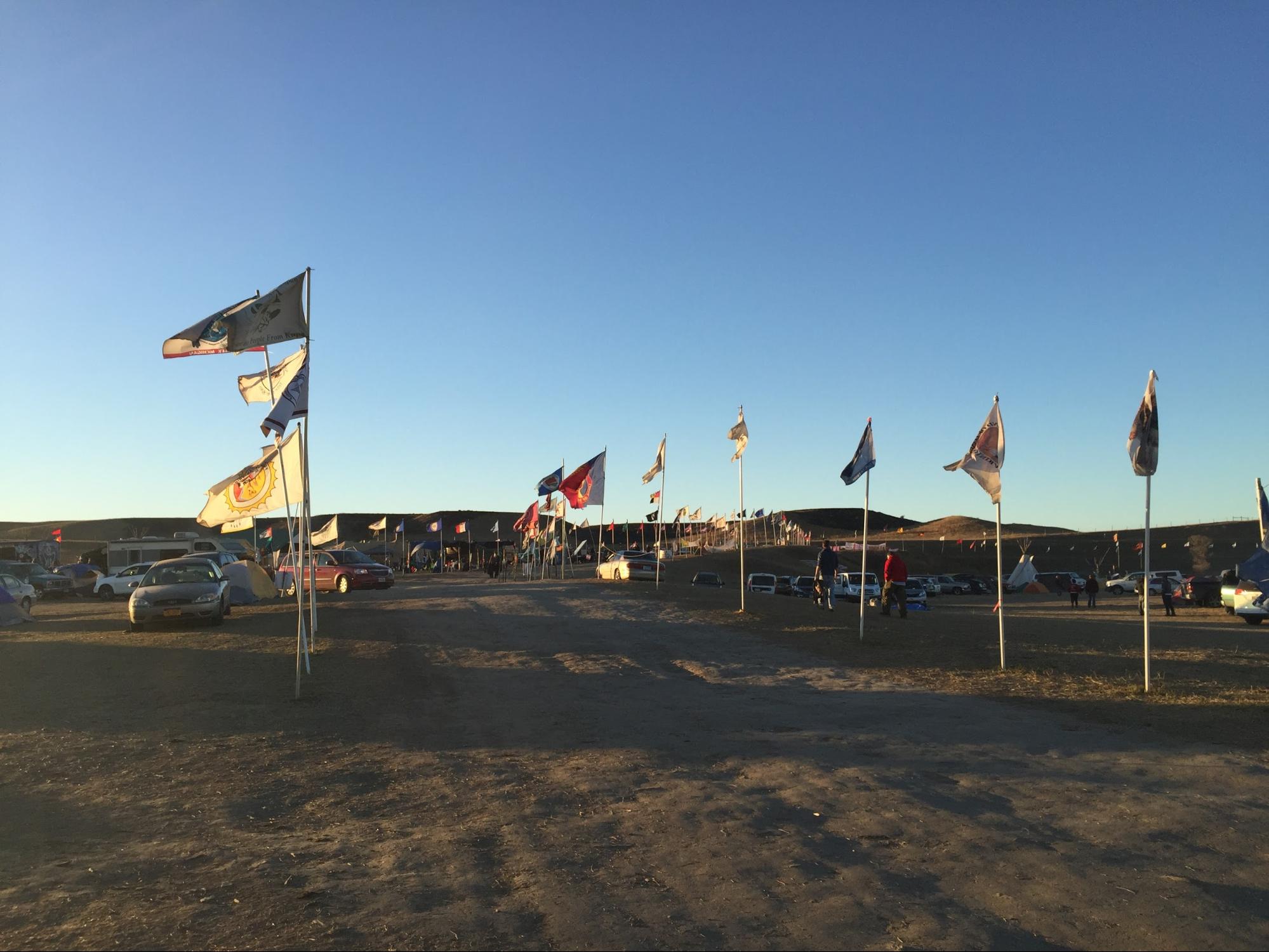
It’s hard to get a sense of what’s truly happening at Standing Rock. Between the myriad voices from the field, misinformation from the opposition, and the near absence of major media outlets, it takes a lot of work to get the real story.
I just came back from a mission to Standing Rock with a crew of Burning Man participants and staff, some of whom are still on the ground. Here’s what we saw, what we did, and what we learned.
Burning Man’s Involvement
Burners Without Borders was first approached about Standing Rock by members of the Theme Camp Red Lightning at Burning Man 2016. In the weeks that followed, requests for support started to increase substantially. Our community was clearly drawn to Standing Rock, and we saw there were some skills Burning Man might be able to lend to the efforts, particularly involving temporary infrastructure and city building.
A core crew of Burning Man representatives — Rosalie Barnes, Kate Gonnella, Terry Gross and I — started to research ways the Burning Man community could make a meaningful impact. We consulted with local elected tribal officials, camp leadership, and NGOs on the ground, as well as Burning Man community members who had been there. It quickly became clear that the situation was complicated, involved many stakeholders, and any engagement would need the blessing of tribal leadership.
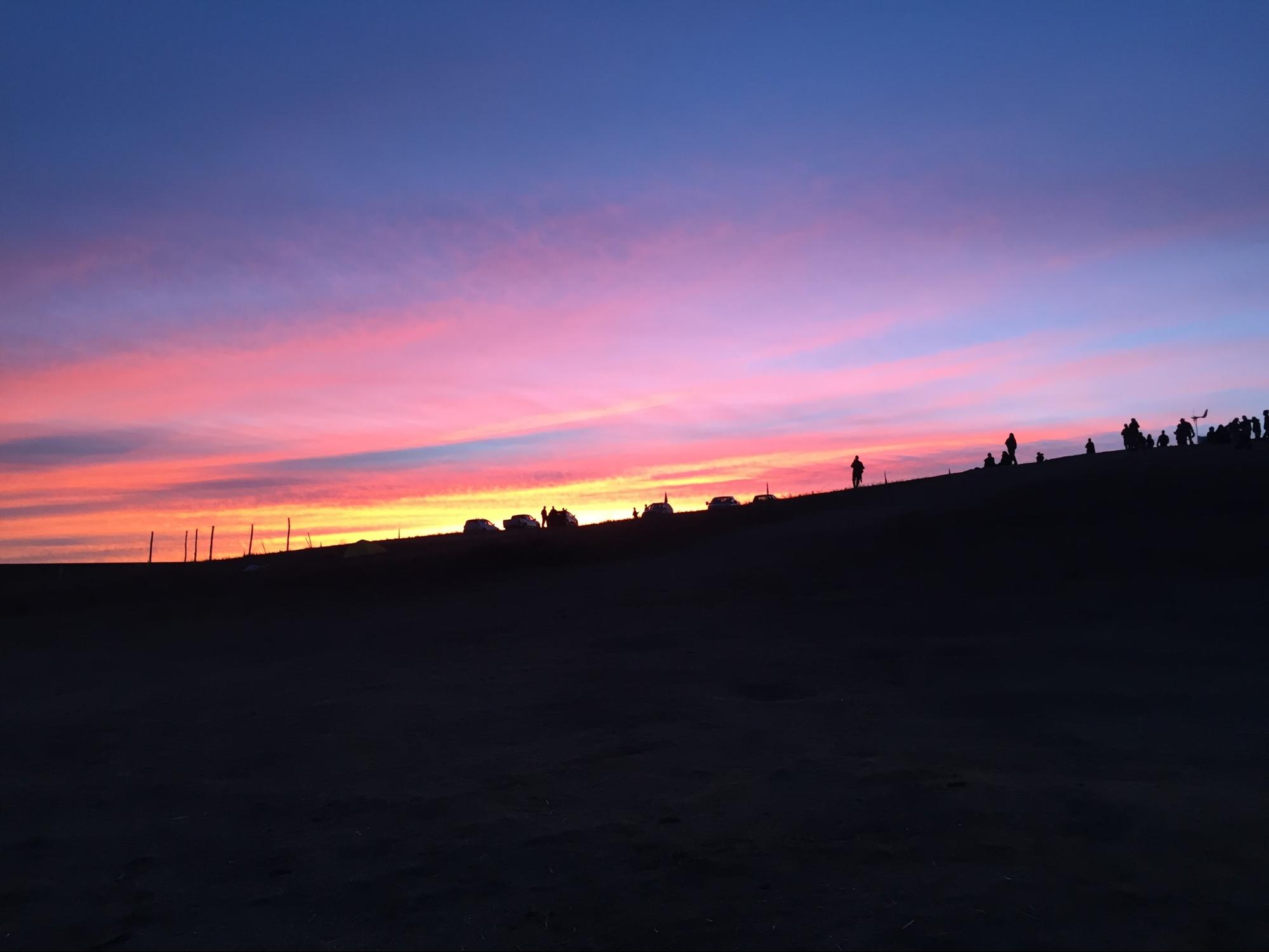
Furthermore, the festival and Burning Man communities seemed to face a general distrust. By now, many non-indigenous allies had shown up, many of them under-informed, which was starting to cause friction. Whether or not those causing problems were actually Burners, Burning Man has become associated with a broader festival culture that the outside world sometimes views negatively. (I think we’ll be seeing more of this as time goes on.)
Some just showing up at Standing Rock might think it’s a lot like Black Rock City with the camping, community, temporary infrastructure, and sense of magical temporality. Needless to say, it’s quite different: It’s a ritual space, and it’s a peaceful occupation. When non-indigenous allies show up with traits valued at Burning Man like self-starter leadership, D.I.Y. mentality, and Do-ocracy, these skills can be seen as “settler mindset,” and no matter how well-intentioned our actions and words are, they often carry a deep-seated root of colonization. The speed at which things happen in Tribal Council is different from the urbanized life many outsiders live, and even well-intentioned allies who’ve shown up have been viewed as disrespectful or unwilling to listen to tribal leadership.

Getting Informed
The first thing we did was prepare our group with the best information available to mitigate these cultural risks. We used the BWB website and a Facebook group as platforms to gather and orient interested Burners. There we listed essential information sources which included:
- Standing Rock Resource Pack
- 12 Loose Rules to Be an Effective White Ally
- Standing Rock Syllabus
- Protectors Alliance Cultural Resources Page
Later, after our own trip, we drafted two additional resources to help educate the wider community that was heading out there:
- How the Festival Community Can Support Standing Rock
- Letter to the Global Festival Community & Individuals Thinking of Coming to Standing Rock
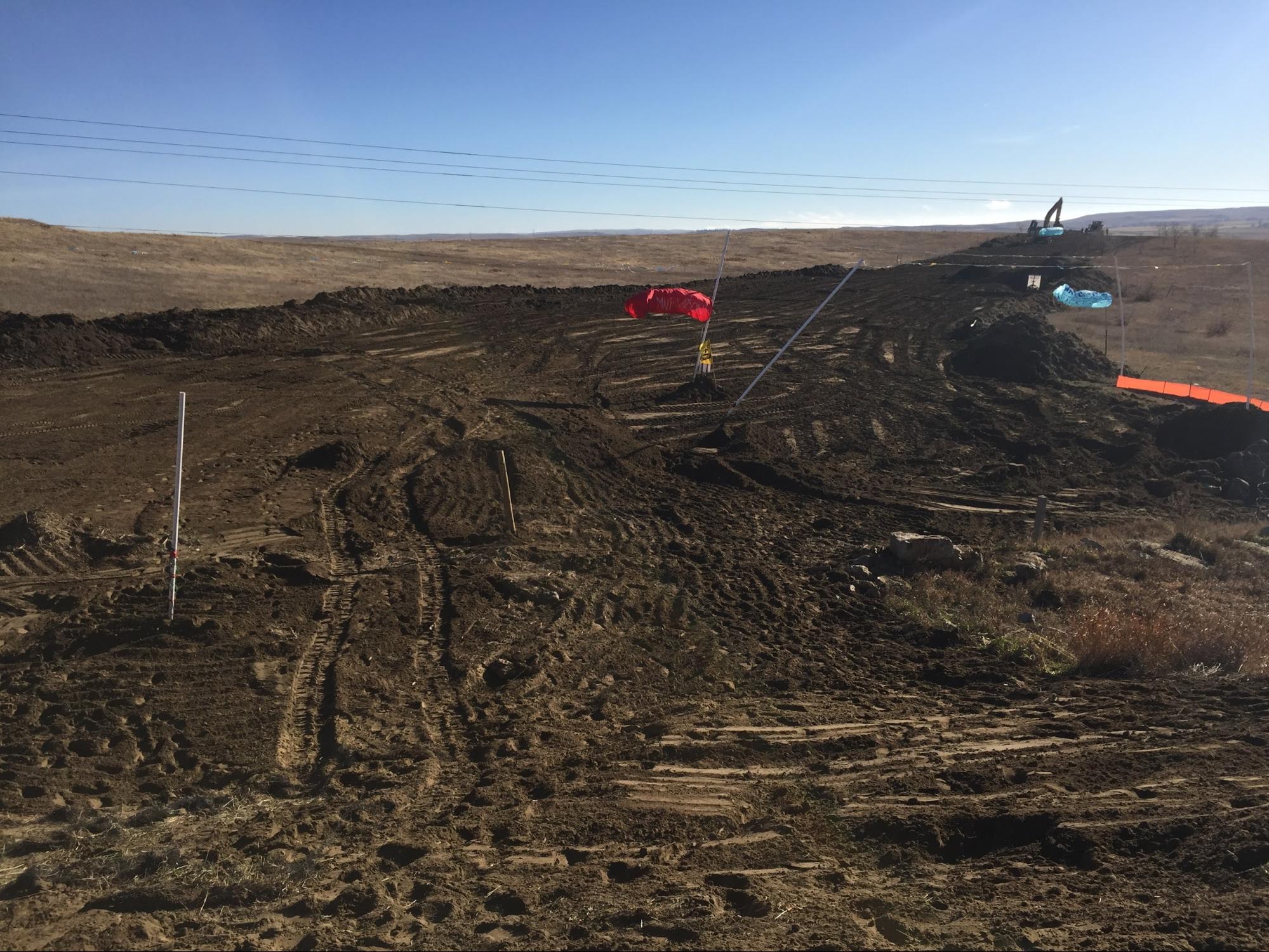

Around this time, a Burner, festival producer and amazing human being named Becca Dakini reached out to us. She had a vision of a neutral, unified platform and a partnership of organizations, skilled workers and producers from the global festival community. She called it Protectors Alliance, and she wanted to collaborate. Instead of duplicating efforts, we joined forces. BWB decided to incubate the fledgling alliance by assisting with legal and financial issues when possible.
The next step was to visit Standing Rock. All our conversations seemed to arrive at the same place: We needed to see the camps ourselves before attempting a real infrastructure project. So the Protectors Alliance — minus Jamaica Stevens (Reinhabiting the Village) — team made the trip on November 7.
Going to Standing Rock, Getting to Work
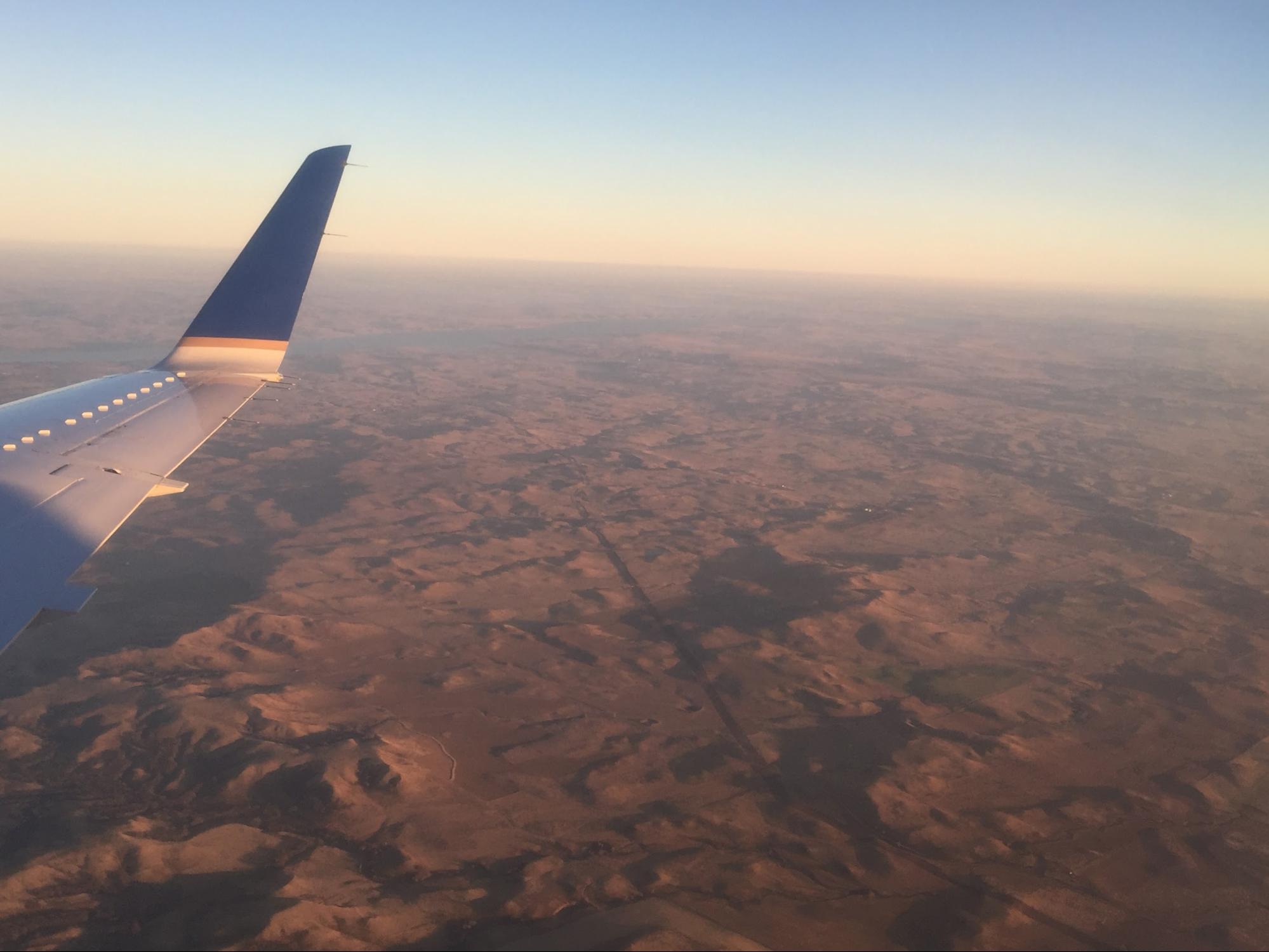
There are three major camps at Standing Rock: Sacred Stone, Rosebud, and Oceti Sakowin Camp. We decided to spend most of our time at Oceti Sakowin Camp because it was the largest in population (ranging from 2,000–10,000), home to the traditional 7 Council Fires, and needed the most winterized infrastructure.

Upon arriving in North Dakota, we followed Becca’s research notes and met with Alisa Puga Keesey and Patricia Arquette’s nonprofit, GiveLove. They focus on composting toilet systems, and they collaborated previously with one of our BWB International Affiliate organizations, Communitere.
The toilet infrastructure at Oceti was going to be an issue pretty soon, as porta-potties freeze in the cold and become unusable. GiveLove had the experience and know-how to start the project but needed a partner for building and fundraising, which was exactly what Protectors Alliance had come to Standing Rock to offer. This project was even more interesting for its long-term sustainable vision. The composting site (pending approval from the Tribal Council and Environmental Protection Agency) would be built on reservation land, and all the toilet infrastructure would be mobile. This way, no matter what happens with the legality of the camps, and even when the protection efforts end, this infrastructure could be used long-term by either the Standing Rock Tribe or another indigenous sovereignty battle.
The fundraising effort is still ongoing for the Standing Rock Composting Toilet Project, and we need your help!
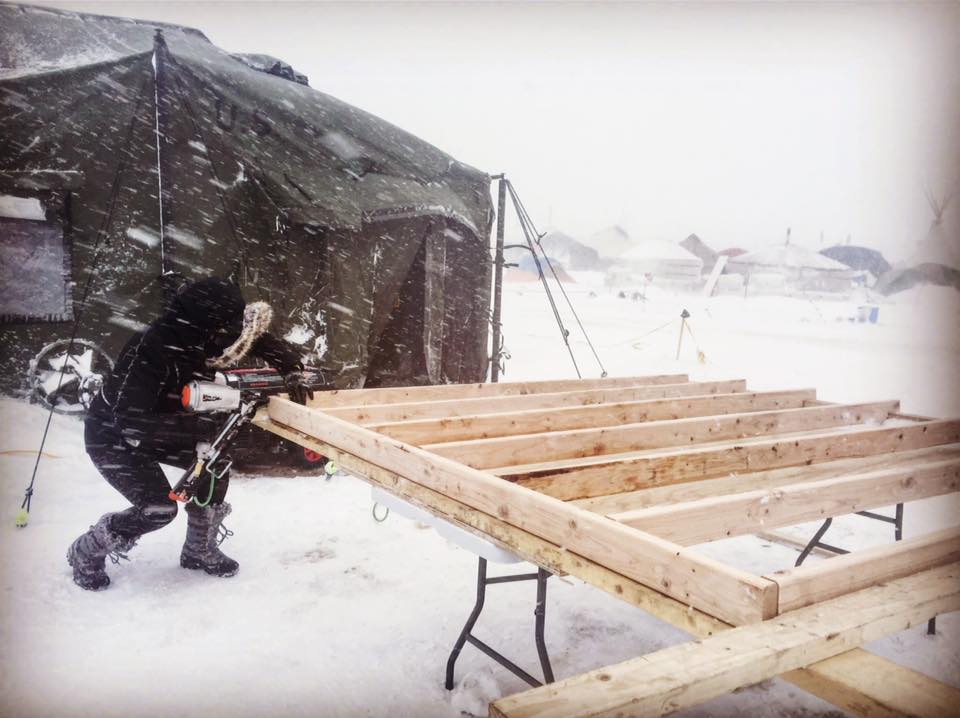
Becca has stayed onsite and formed an amazing team of builders from a variety of communities including Do LaB, Symbiosis, and Burning Man. Her vision of a unified team of allies has come to fruition in record time and against many obstacles. The team is set to finish the first phase of the project by December 8.
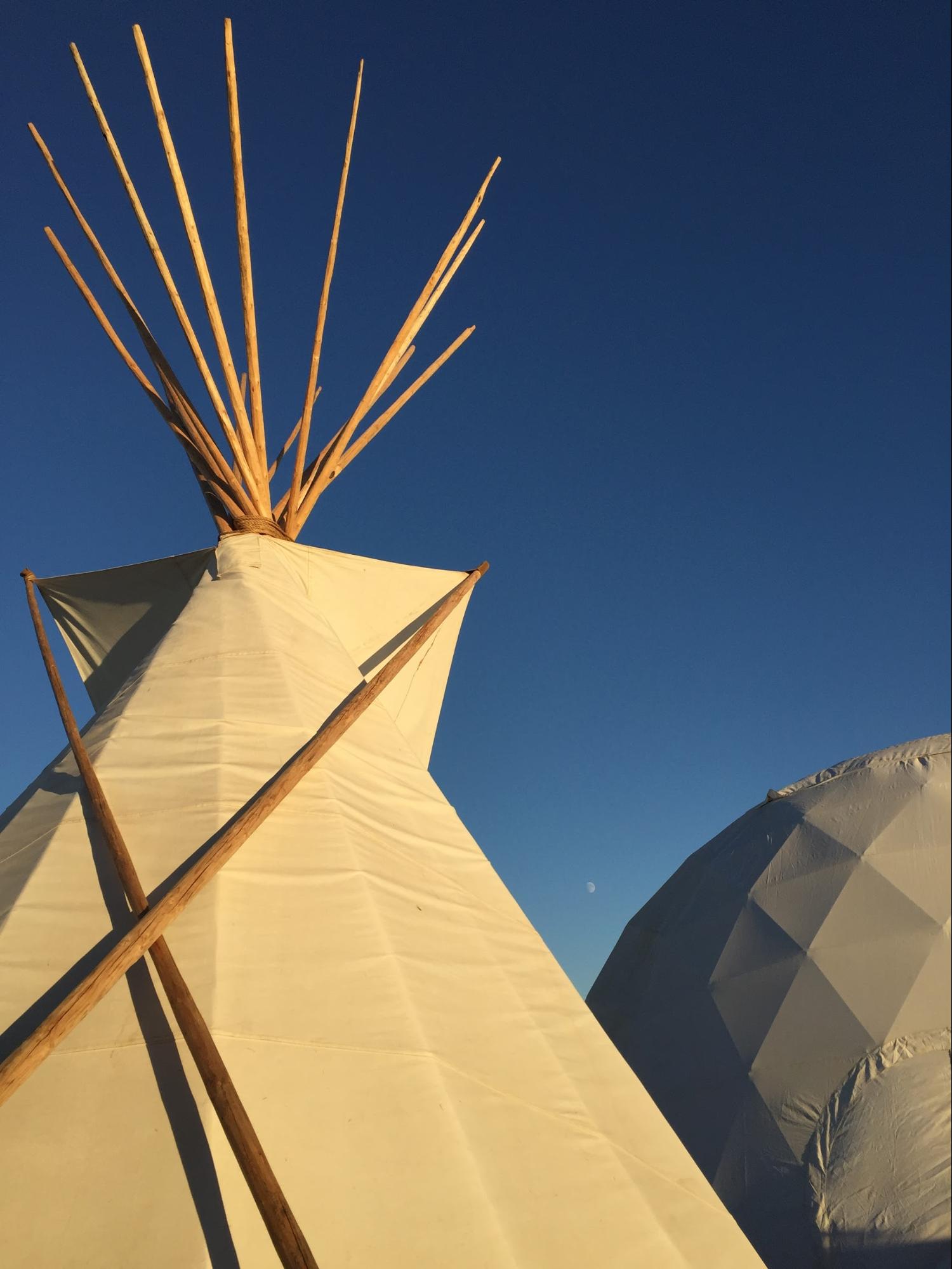
We ran into a bunch of Burners all working hard on various projects. Red Lightning is out there and has built their da Vinci Dome from Burning Man. The dome has been gifted to Oceti leadership, and the tribe directs the programming there, including the 9 a.m. All Camp Meeting as well as the daily Winterization Meetings.
Bianca and Nick Heyming were the first Burners we were aware of on the scene who wrote an excellent article about their own experience here.
Morgan, Hale and Naomi Langley are working on their project, Burning Clean, at Sacred Stone, which includes winterization efforts, legal cases, and an innovative plastic recycler being built by Sam Smith. Mike Willenborg from BWB Detroit was there assisting on the front lines. There are many others we’re aware of too, and even more we haven’t made contact with.
I think this is pretty stark counter-evidence to the narrative that Burners were causing trouble. There’s obviously a steep learning curve out there, and some outsiders might not have aced the test, but it also may have been a smear campaign, as some have argued.
The World Is Finally Watching
The mainstream media finally showed up at Standing Rock on December 4 to announce that the Army will not grant easement for Dakota Access Pipeline crossing. Then, that night at 11 p.m., Energy Transfer Partners announced that not having the permission for the easement won’t change their plans at all.
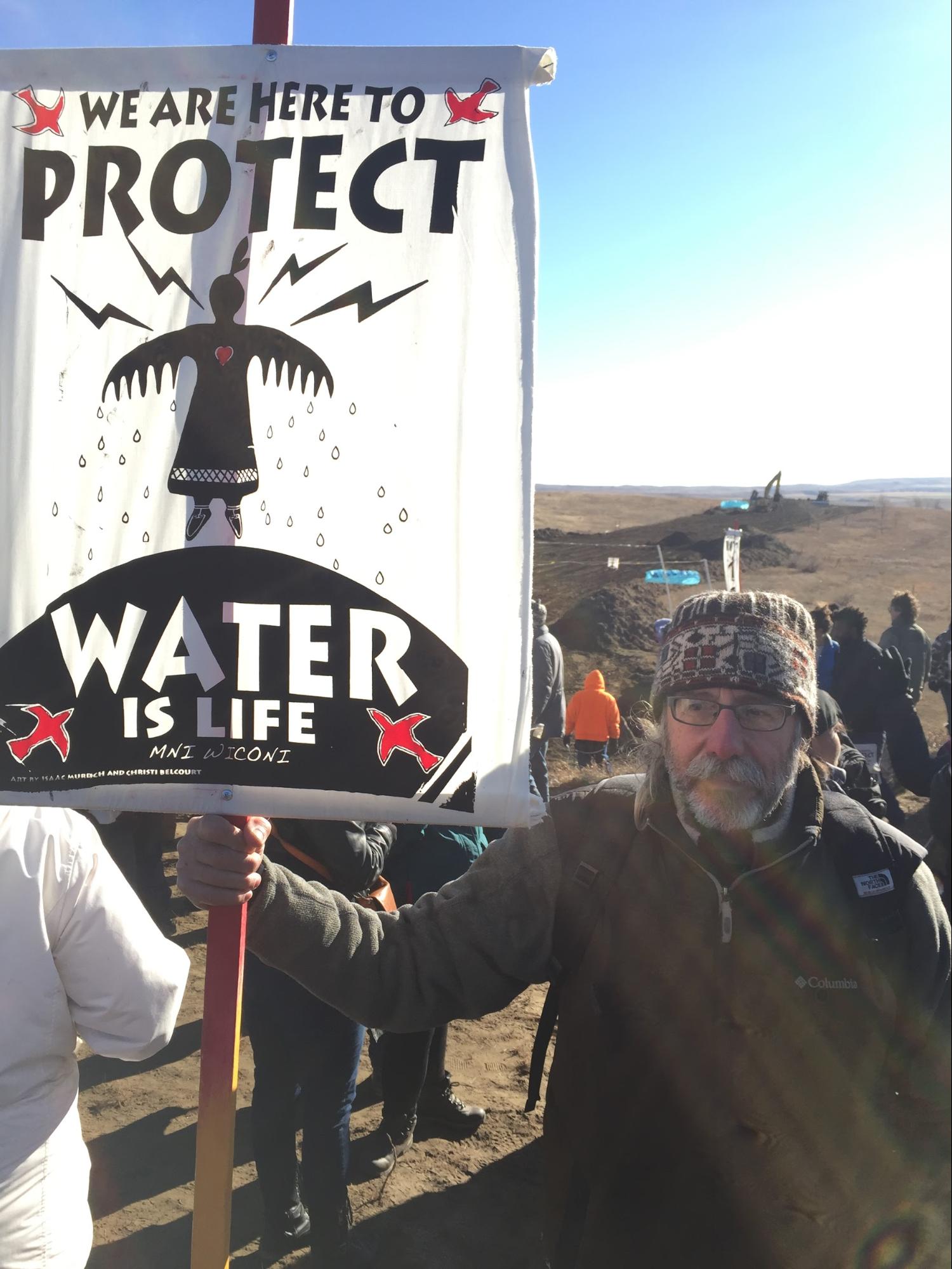
The more I research this issue, the more I understand that what’s happening at Standing Rock is one battle in a much longer fight over indigenous lands and sovereignty. Looking back at the Occupation of Alcatraz in 1969, or to the Occupation of Wounded Knee in 1973, all these actions stem from a treaty signed with the Sioux people in 1868 at Fort Laramie, which is the legal basis upon which Standing Rock is arguing today. This resistance is an old story, because the violation of treaties and native land rights is an old story.
No matter what happens at Standing Rock in the next few days and weeks, the research and the trip to the camps has ignited a fire inside me. I might have always known it subliminally, but I now know it viscerally: It’s our responsibility as engaged and aware citizens to be more aware, to consciously share this planet with the First Nations, and to be part of a healing process that has been centuries coming. I dream about the ways the Burning Man community and Regional Network might play a part in this, if we are able to slow down for a moment and listen to the beat of a different drum.
Editor’s note: This post originally stated that Energy Transfer Partners “will opt for the daily construction fines rather than investigate a re-route.” That was not confirmed to be accurate and has been corrected.

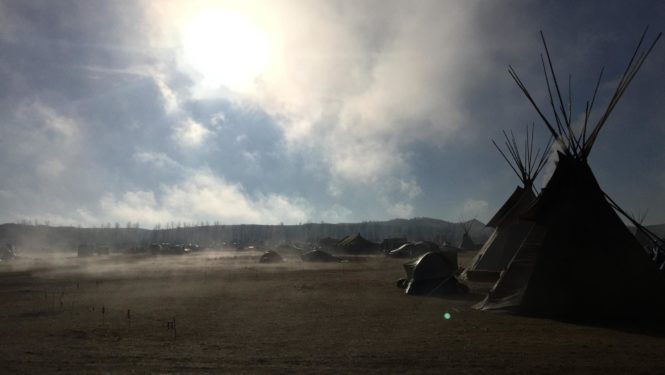
Lots to appreciate in this; background on what is currently going on and what lead to this , the coordination with other groups and the recognition of those other groups, the respect shown to those already on the ground and to those directly affected by what’s going on, the clear reasoning of why the particular work they are doing was taken on, and what they did to counter the negative images of the ‘festival’ culture showing up. A great example of the culture in practice.
Report comment
“Deep seated root of colonization” indeed.
Report comment
I failed to mention the work of an essential ally & core team member from Protectors Alliance- Jamaica Stevens (Reinbahiting the Village) in this article.
She will be added in an edit later today.
Report comment
Thank you for this post and your good work, but I was shocked by this statement above:
“Energy Transfer Partners announced that not having the permission for the easement won’t change their plans at all, and they will opt for the daily construction fines rather than investigate a re-route.”
There you give a reference to the ETP press release. I read that, and I did not see direct support for your statement here that they will continue and just pay fines. They say they don’t intend to change their plans, but that could just be bravado or defiance or a guess (perhaps based on private conversations with Trump or aides) that come Jan 20 they will be able to proceed as originally planned.
Snopes says that the claim about paying the fines and proceeding is unproven
http://www.snopes.com/dakota-access-pipeline-continuing-despite-denied-easement/
Mr. Breedlove – would you consider addressing this issue further as an update to your post or in the comment section here?
Many thanks and in solidarity
Jason Hodin
Report comment
Jason-
Thank you for this comment and correction. I have asked our editor to amend the article and delete the second part of the sentence, which is inaccurate.
I had seen the report by Dallas Goldtooth, and also been listening to the reports of our volunteers on the ground– and I somehow got my facts crossed there. I’m quite pleased to see that its an unfounded comment.
Report comment
Thank you for your work and your reporting, which is invaluable to the rest of the world.
Report comment
Good overview from a burner perspective. I’ve been to the playa and worked in the camp. Kind of puts the festival in the desert in perspective, eh? I hope burners can all spend more time going forward supporting indigenous groups fighting for environmental justice (there are many) than (or instead of) burning fossil fuels on the way to, and in, the desert.
Report comment
Yep, I couldn’t agree more with your comment… (I went straight from the Playa to Sacred Stone camp — that was quite a colossal shift in perspective!)
Report comment
I’ve been hearing some of those beats from a different drum myself.
Thanks for bringing more awareness. It is so important.
Report comment
Christoper, you say:
“The more I research this issue, the more I understand that what’s happening at Standing Rock is one battle in a much longer fight over indigenous lands and sovereignty.”
Except when it’s about halting fossil fuels and destabilizing our economy. This following quote is from CNN:
“…May Boeve, executive director of the environmental group 350.org, warned pipeline opponents.
“The fight against Dakota Access has fired up a resistance movement that is ready to take on any fossil fuel project the Trump administration tries to approve. On Dakota Access and every other pipeline: If he tries to build it, we will come.”
Why are we involved in a divisive, polarizing issue like this? What does this have to do with creative collaboration, which is the engine of Burning Man? I don’t like where this is going.
Report comment
Alfie-
It is complicated out there. Different people have different reasons for being at Standing Rock. I don’t know 350.org but I would guess that it’s a non-indigenous organization that wants to turn Standing Rock into evidence for its own validity and cause.
The quote you cited does not reflect the interest or intent of BWB in any way.
Burners Without Border’s Program Mission states:
“BWB promotes activities around the globe that support a community’s inherent capacity to thrive by encouraging innovative approaches to relief efforts and grassroots initiatives that make a positive impact.”
Report comment
What is divisive about the fact that the people of Bismarck (92% white) were afraid that an oil spill would contaminate their drinking water and said no, and then Energy Transfer Crude Oil Company said, NBD, let’s put where no one cares… less than a mile from an Indian reservation?? The injustice is egregious. This is not divisive. This is environmental racism at its most captain-fucking-obvious. This win has galvanized hundreds of tribal nations and indigenous youth to recognize their power after centuries of oppression. Thank god for that. There is no compromise with the shitshow we’ve voted into office. If we make it out alive in 4 years, we will be thanking the indigenous people of this land for pointing the way.
Report comment
When you went to Standing Rock did you arrive by bicycle or walk? Or did you arrive via a carbon based fuel sourced vehicle?
Report comment
Why would you ask if they walked or rode bike? Does it really matter? The issue here was the location of the pipeline-that it was moved from above a primarily white community to above the Indian Reservation. That it was going through sacred areas. That the oil it carries is more volatile and unstable than other oils-that the pipe circumference is bigger-a recipe for disaster….please, credit to those people who did walk or run thousands of miles…but your question of how they arrived sounds like you are showing your ugly to me.
Report comment
Thank you for reporting from behind the scenes. We as an evolving Burner Community Respect and Honor Sacred Land. The road to Standing Rock was inevitable. We must listen to the Elders of the First People. As they have the wisdom that caretakers of the earth must pay attention to….One Love Namaste!!!
Report comment
Thank you for this report. I really appreciate your language and perspective. My 10 year old will be posting on the “current events” board in her 5th grade classroom.
Report comment
thank you for the great article
Report comment
Thank you so much for this intensive piece. as a long-time burner who also feels the call to support indigenous rights and this fight — but who is also just a white guy — i’m torn on how to help without it seeming like tokenism. Your breakdown shows it can be done while letting the tribes have the respect they deserve and letting them make the call on how to act and respond. Thank you for representing those of us who can’t be there in person. Stay safe, stay warm!
Report comment
Hello, all my respect for the work you are doing at Standing Rock. I followed some of the links provided and found out that the website http://www.standingrocksolidaritynetwork.org/about.html was probably hacked. The web pages connect & subpages. links, donnation, local action are totally empty. As there is no way to contact them, could you please pass on the message to the elders or people in charge of this ? Thank you. I left a support request at Weebly, the website editor.
Report comment
My daughter works for Upworthy, and has been there the past week. We spoke last night, and she is genuinely afraid for her friends that are there. The weather is about to get even colder, -20 F. Although law enforcement has decided against a direct confrontation, they are doing everything they can to make a bad situation worse. The porta potties have disappeared, AAA will not respond to calls for assistance from stranded motorists, and local stores have been discouraged to sell to anyone involved with the camps. The recent announcement from the feds to stop construction is far from any final victory. In fact, it has caused some disruption in the camps. Some leaders are telling people to leave because of safety reasons, while others are urging people to stay.
This is a multi faceted struggle, with many different causes coalescing to take a stand. At the root of it all is the fact that the Native People have repeatedly been screwed over by the dominant culture of the USA. As Howard Beale said in the movie Network, “We’re mad as hell, and aren’t going to take it anymore”.
Anyone familiar with both the Native American culture, and Burning Man, can see many similarities. Most of our ten principals are part of the NA lifestyle, most notably reverence for the environment (LNT), and communal experience. The difference is that burners diverge from their normal lives to do this one week a year, while the NA live it all the time.
Report comment
As a member of the toilet team on the ground @ Standing Rock I want to express how much I learned about my ego. “My agenda” got put on the back burner as SO many voices needed to be heard to come to concensus on items like placement, Vets needs, use of resources.
Recognizing that ‘my way’ isn’t only way seems like a big step in building my compassion and empathy.
I also want to express that the level of commitment and dedication to the task at hand, even under extremely stressful conditions, by those on the ground make me Very proud to have been a part of this group.
Report comment
Comments are closed.